Not everyone knows this, but among the many insects that populate our healthy gardens, many are beneficial predators.
These insects help plants in many ways, such as by decomposing organic material to enrich the soil for vegetation. Some insects are pollinators, and without them, many crops wouldn’t survive.
Another important kind of beneficial insect are predators, which helps keep pests under control by feeding on them.
Some predatory insects are routinely used as a means of organic pest control, as they can be very efficient.
Knowing and using predatory insects this way has many advantages, especially the fact that it doesn’t cause any pollution. It’s a clean method that benefits us, the insects, and nature in general.
- Related article: List of Garden Insects
Most likely, these insects are already present in your garden and to keep them alive you will just have to avoid using insecticides.
In any case, a good way to encourage the presence of beneficial predatory insects is to enrich your garden with many different plant species, especially flowering plants.
This will increase its biodiversity and provide the perfect habitat for beneficial predatory insects.
1. Dragonfly (Anisoptera)
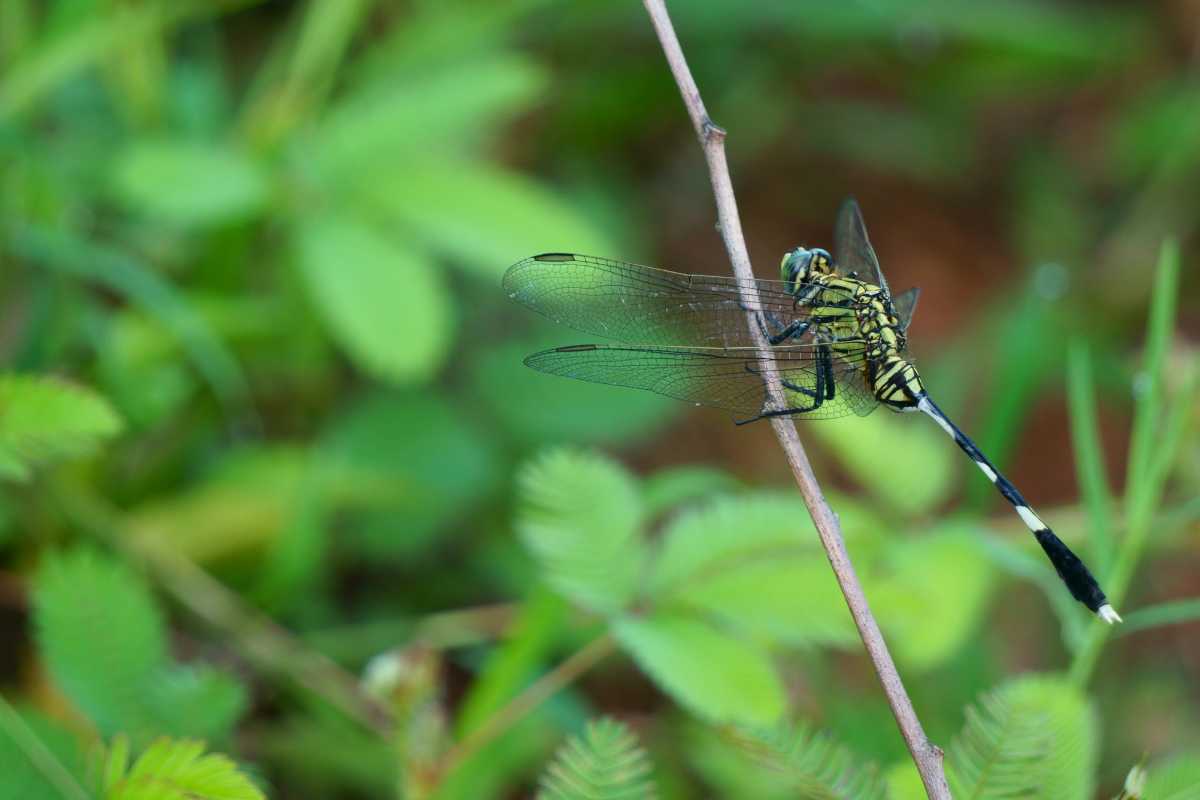
Dragonflies are some of the most stunning insects to watch flying around, and they are also one of the oldest insect species on Earth.
These insects are not only graceful, but they are also extremely ferocious predators of mosquitos and flies, as well as other flying insects.
Just imagine the impact they can have on your garden when a single dragonfly can eat up to 100 insects each day.
Unfortunately, dragonflies can only live where there is no air pollution, so you won’t be able to take advantage of their benefits if you live in a dense city.
Dragonflies need water nearby to lay their eggs since their larvae are aquatic and start feeding from insect eggs straight away. If you want them to thrive in your garden, you will have to provide a pond or a fountain.
2. Damselfly (Zygoptera)
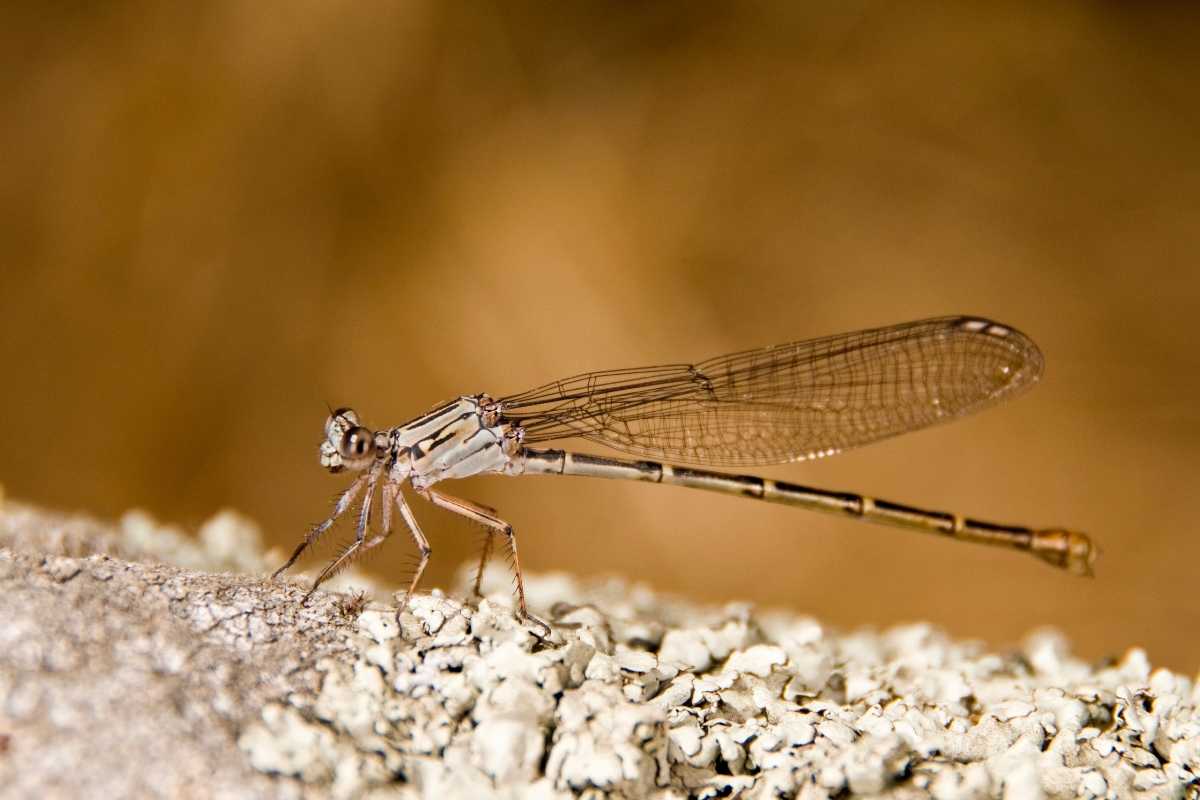
Damselflies share many similarities with dragonflies since they belong to the same order, Odonata. They both have chewing mandibles and leave near water, where they lay their eggs.
Damselflies are also good indicators of the quality of the environment, as they only thrive in clean and diverse habitats.
Damselflies are long and slender insects with two pairs of membranous wings. They can be of many different colors, most times very bright ones.
Adult damselflies may look fragile, but they are very quick and efficient predators with a bottomless hunger, particularly just after they complete metamorphosis from the nymph stage.
They mostly feed on flies, mosquitoes, beetles, and caterpillars.
3. Ladybugs (Coccinellidae Family)
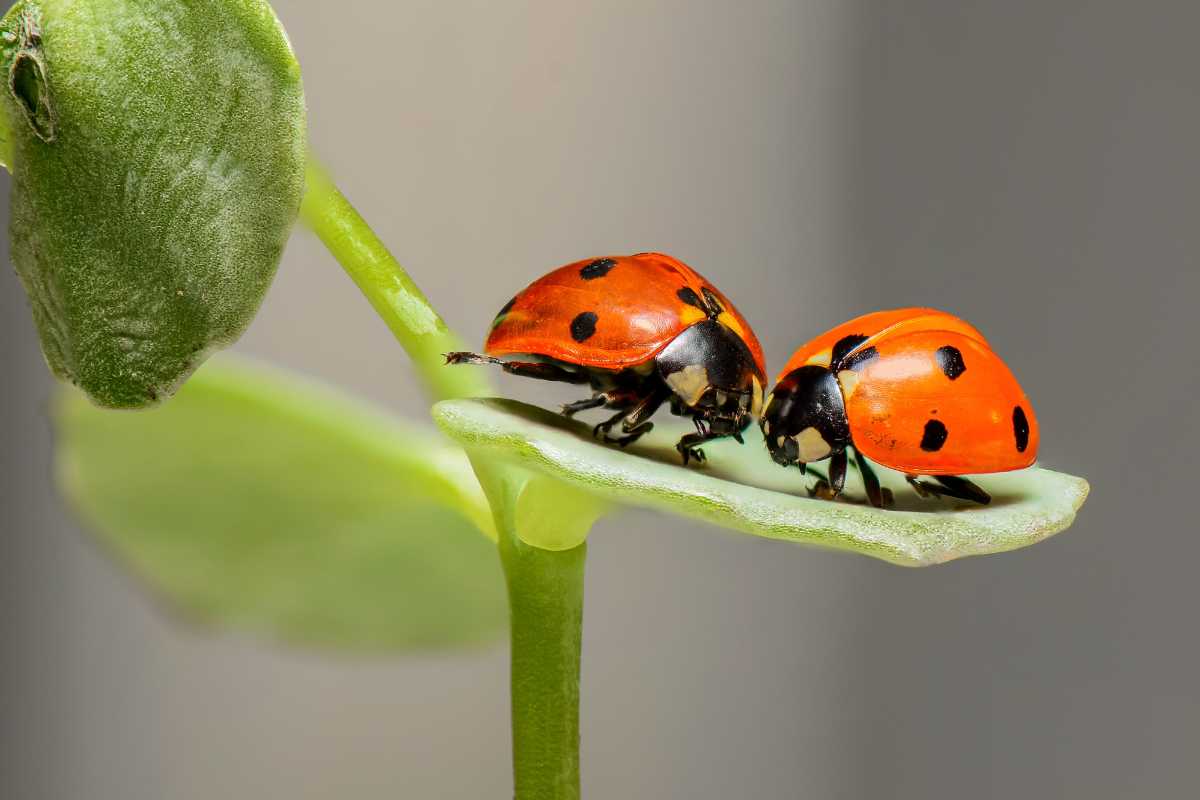
Ladybugs are well-loved by most people, even those who are creeped out by insects. The lady beetle is a very efficient predator, and they just have an appetite for aphids.
Adult lady beetles also feed on spider mites, scale, mealybugs, and whiteflies. This wide variety of prey is what makes them one of the most popular beneficial insects, apart from their cuteness.
Ladybugs are most efficient at the larval stage. They kill their victims by vomiting saliva on them, which starts decomposing them even before they have been ingested.
The only possible downside of a lady beetle is that if their usual food source is lacking, they will start sucking out juices from plants.
They can be attracted by many plants, such as fennel, alyssum, tansy, potentilla, and yarrow.
Check out the Ladybug Fact Sheet to learn more about them.
4. Green Lacewings (Chrysoperla Carnea)
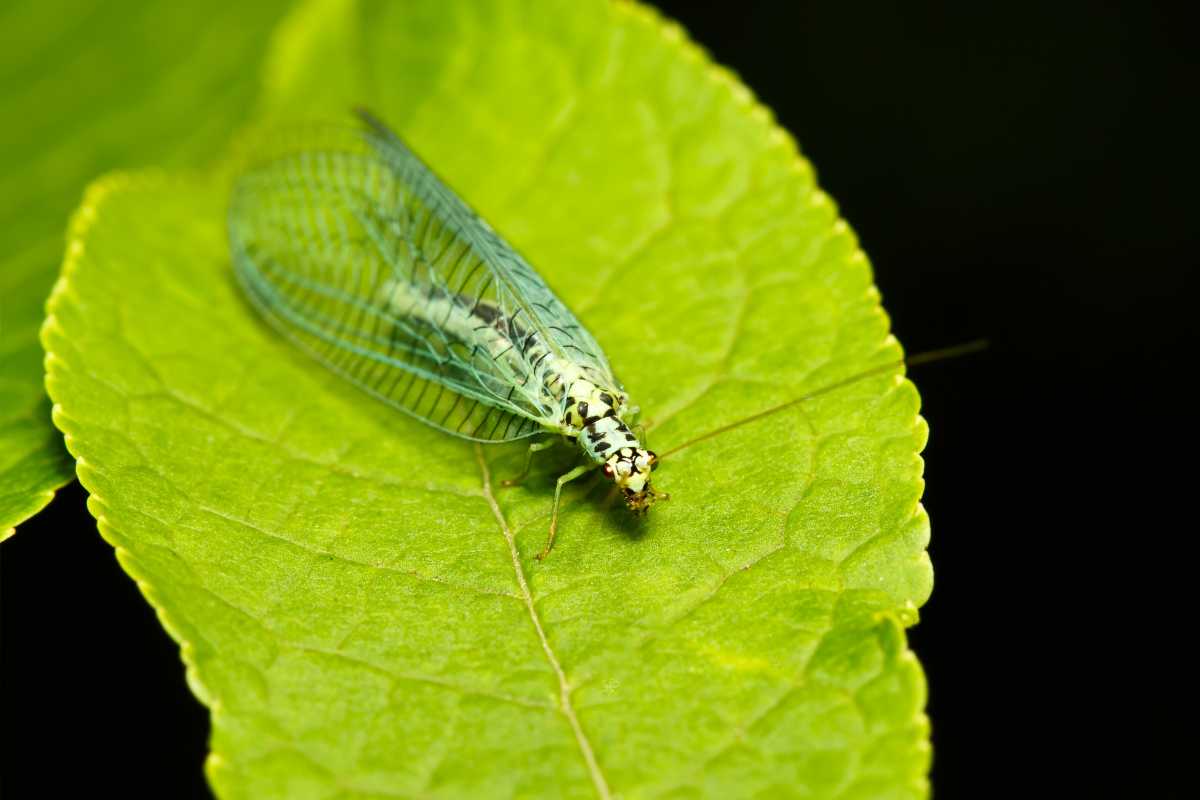
Green lacewings are also aphid lovers. If they are present, they will prey on these tiny insects, but otherwise, they can also feed on mealybugs, mites, thrips, and white flies and eggs.
Green lacewings are difficult to see in action since they hunt during the night, but you can be sure they are very efficient, especially at the larval stage. Which is why they are often called “aphid lions”.
Adult lacewings have transparent wings that are twice as long as their body and lend them a graceful appearance.
This green insect often lay their eggs on top of their prey to give their youngs the best chances of survival.
You can encourage their presence by having in your garden yarrow, dill, angelica, coriander, cosmos, fennel, and dandelion.
5. Big-Eyed Bug (Geocoris Species)
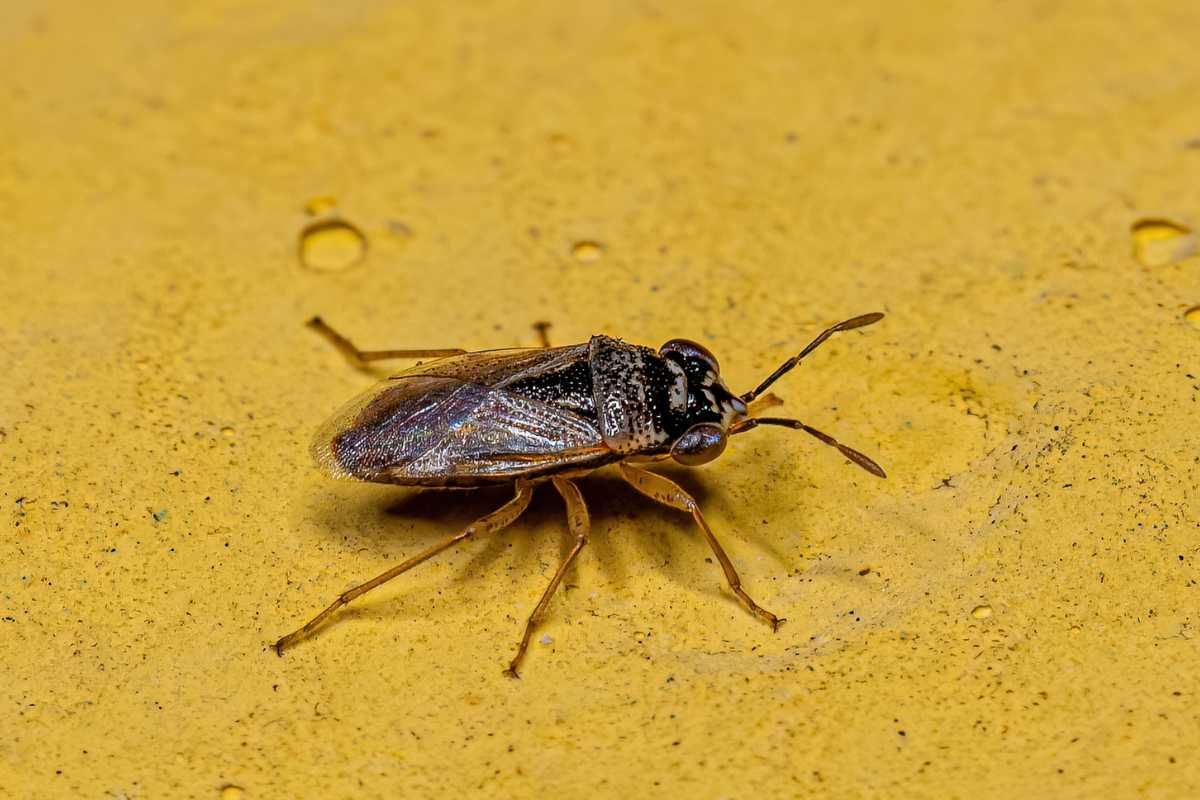
Big-eyed bugs can be very beneficial for common garden plants as they prey on most pests. They particularly like a wide variety of mites, caterpillars, leafhoppers, thrips, and whiteflies, as well as insect eggs.
Big-eyed bugs feed by sucking the body fluids of their victim through their proboscis. If their prey is low, they can resort to feeding on plants, both by eating leaves and sucking sap.
The good news is that in most gardens there are plenty of insects to provide plentiful food for these bugs.
Identification can be a bit tricky, as big-eyed bugs resemble harmful ones, such as chinch bugs, false chinch bugs, and pamera bugs. You can tell them apart from the others thanks to their big, bulging eyes.
Big-eyed bugs can be attracted to cosmos, fennel, goldenrod, marigolds, and mint.
6. Rough Stink Bug (Brochymena Arborea)
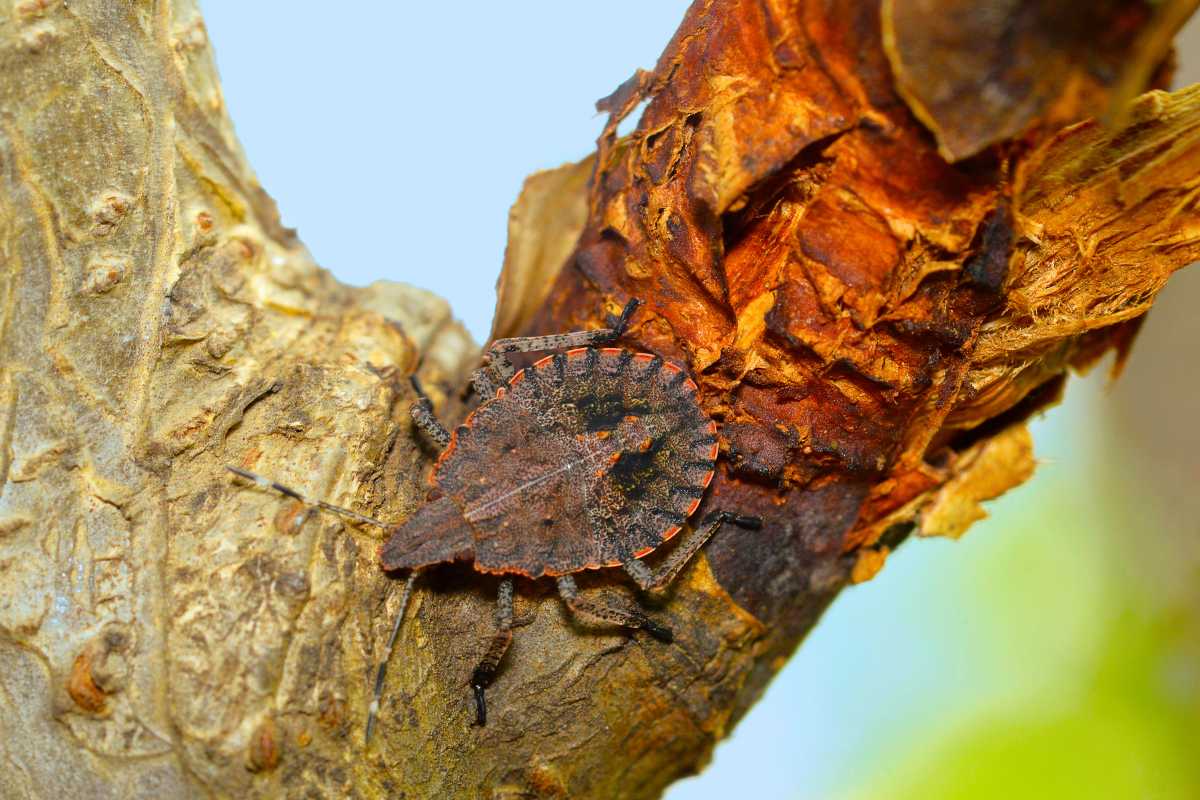
There are hundreds of species of stink bugs just in North America, and they all live up to their name, as when they are disturbed their abdominal glands release a repulsive odor.
Despite this, you shouldn’t rule off the rough stink bug as a beneficial insect, as it preys on caterpillars, harmful beetles, aphids, and others.
Rough stink bugs live on tree bark, which they imitate in color in order to conceal their presence from predators.
If you look closely enough, you will be able to spot some features that can help you to tell this beneficial bug apart from its harmful relatives.
Its texture is rough-looking, its thorax has lateral spines, and they have short and thick beaks as mouths. Rough stink bugs can be found on many trees, especially fruit trees.
7. Praying Mantis (Mantodea Order)
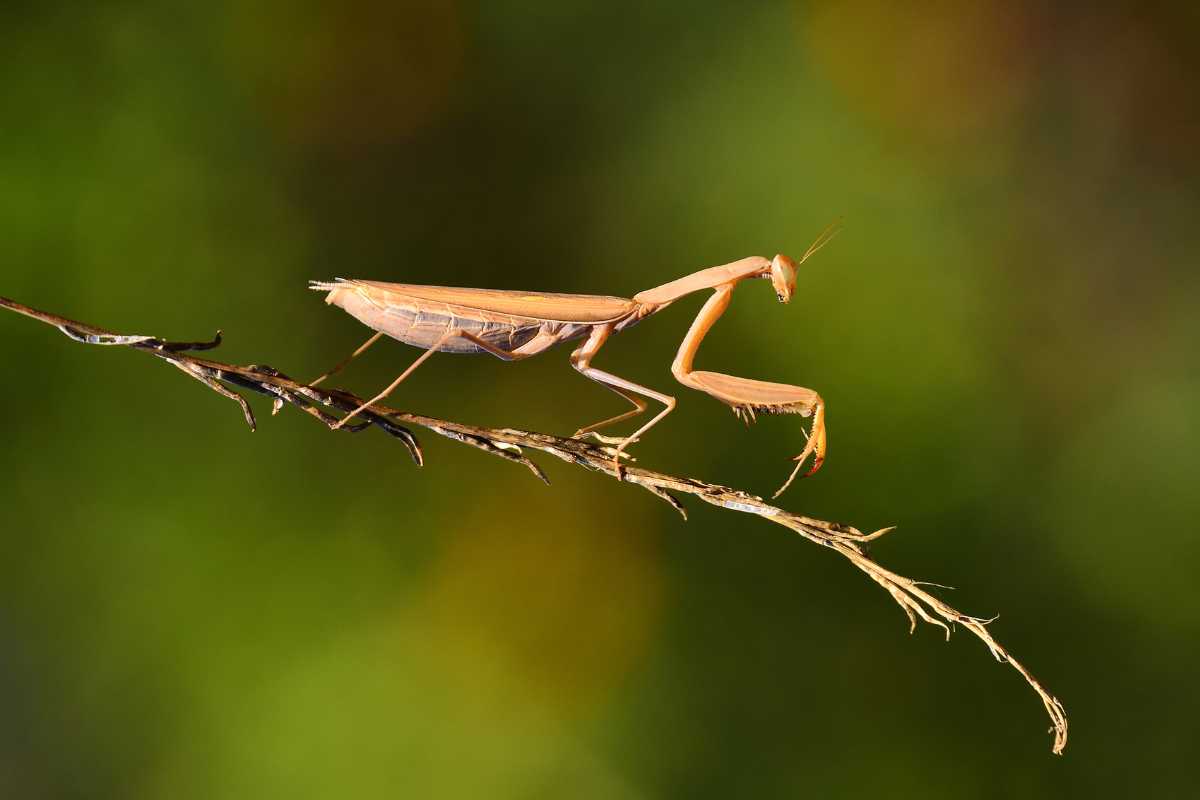
Praying mantis are best known for their cannibalism, but fewer people know that they can also impact the populations of harmful garden insects.
Their favorite foods are grasshoppers, moths, beetles, flies, spiders, aphid populations, and crickets. They are extremely adaptable and can also feed on mice, frogs, lizards, and even hummingbirds.
Some people aren’t sold on the idea of attracting praying mantis, as they can also eat beneficial insects from time to time. All in all, it seems that they mostly have a positive impact.
If you decide that you want to encourage their presence, consider planting bushes such as roses and raspberries.
8. Spiders (Arachnida Class)
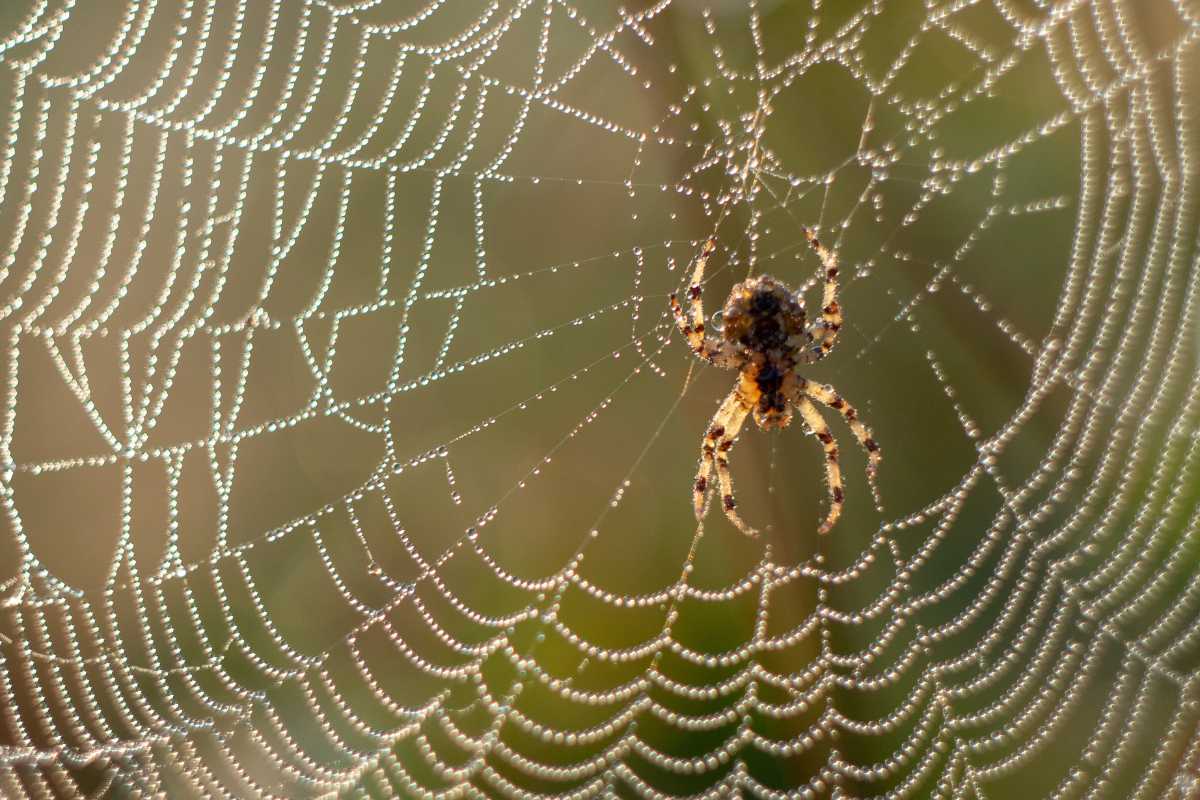
Spiders may be the most hated among small creatures, but they can be extremely helpful as well.
They feed on a variety of insects such as aphids, wasps, beetles, and flies, they also feed on mosquitos, which will make working in your garden much more pleasurable.
Spiders are some of the first to start hunting in springtime, so they can be essential to take care of the first pests that can attack your tender shoots.
Even if you are of those who are disgusted by spiders, you should think twice about removing these voracious predators.
It would be best to learn to recognize the ones that are most helpful, such as wolf spiders, jumping spiders, and garden spiders.
You can make sure they have an ideal habitat by having grass clippings and bushes available to them.
9. Ground Beetles (Carabidae Family)
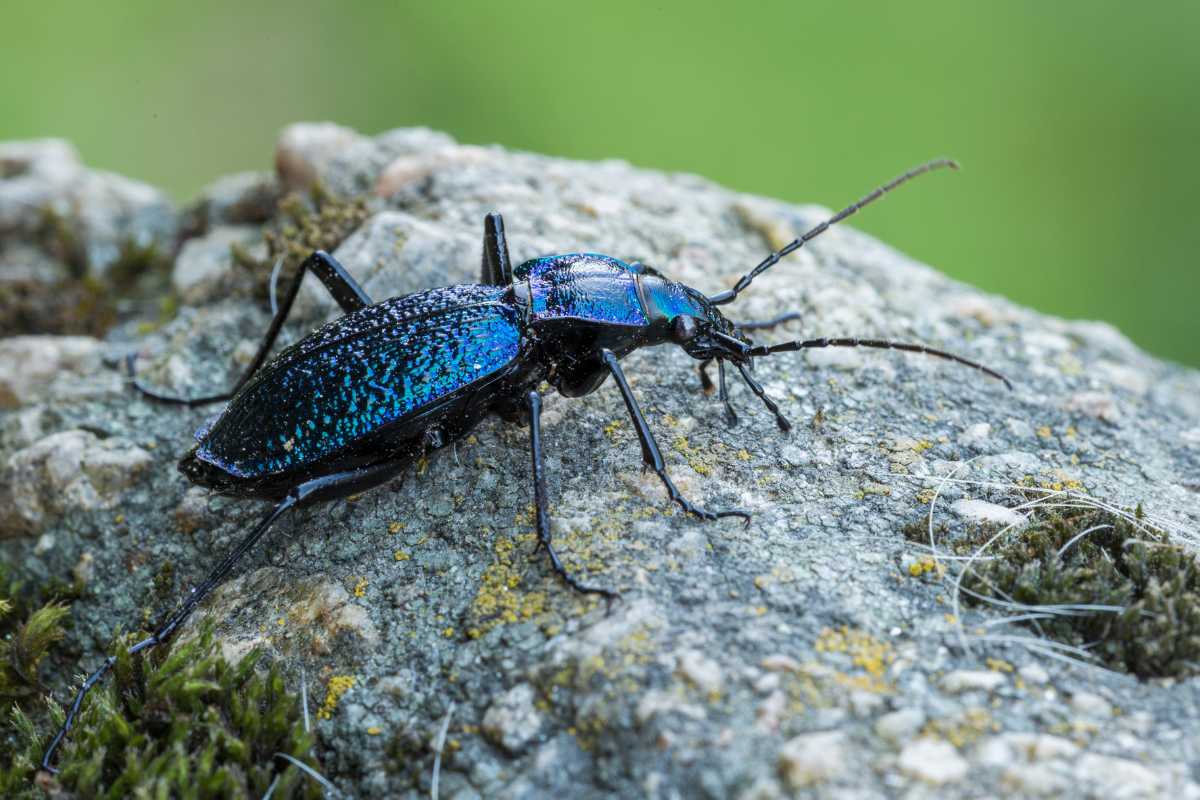
There are many species of helpful ground beetles which feed on both small and large insects.
Adult ground beetles can take care of aphids, caterpillars, Mexican bean beetles, and Colorado potato beetles. They shouldn’t be confused with other less beneficial beetles, such as the Japanese beetles.
Ground beetles love cool and shaded areas, which you can provide by leaving small piles of waste material around your garden, such as leaves, logs, or stones.
Their most interesting characteristic might be that they produce enzymes that digest their prey outside of their bodies, much like ladybugs.
10. Soldier Beetle (Cantharidae Family)
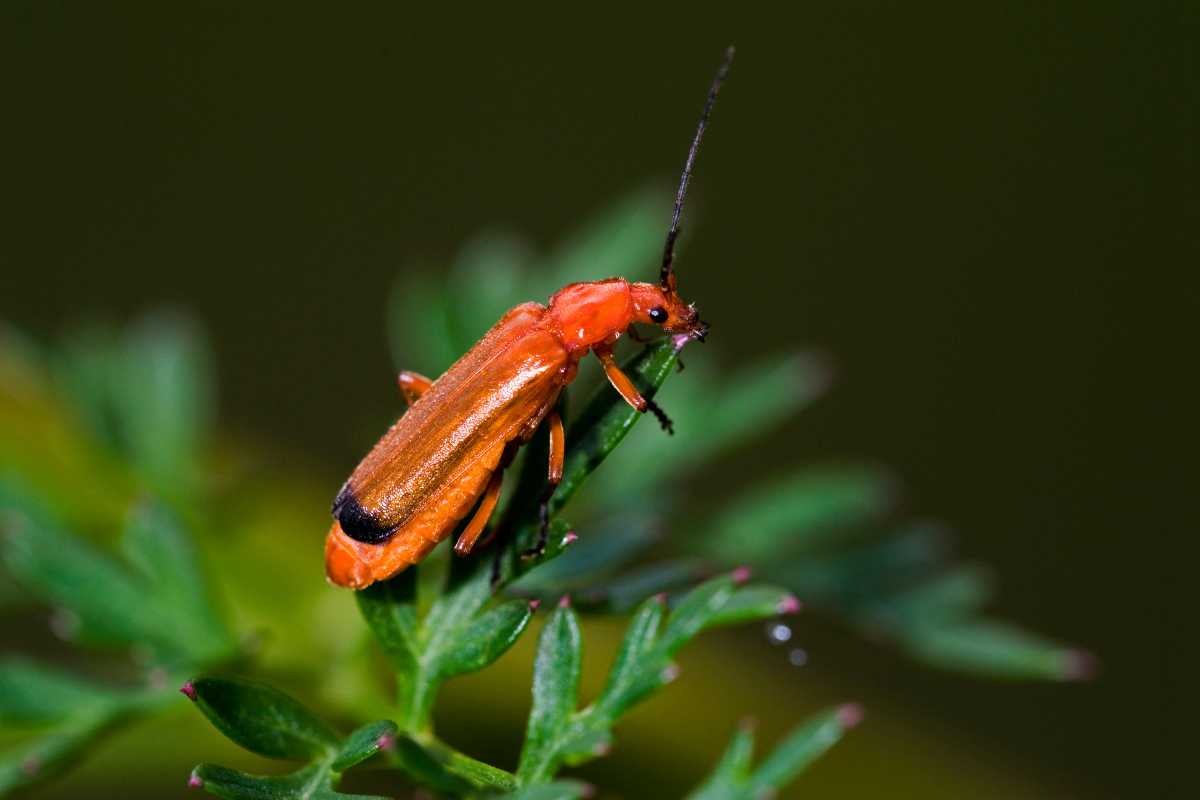
Soldier beetles have double usefulness. They are beneficial pollinators but also feed on eggs and soft-bodied insects, such as aphids.
If this is not enough to convince you to want them in your garden, consider that they are completely harmless to humans as compared to using chemical pesticides.
Their appearance can easily fool you, as they can look like fireflies when resting, while in flight they resemble wasps.
Soldier beetles can be distinguished by their color, which is yellow or tan, and their wings, which have a large black spot.
These beetles especially appreciate goldenrod, zinnia, marigold, daisies, and linden trees.
11. Hover Flies (Syrphidae Family)
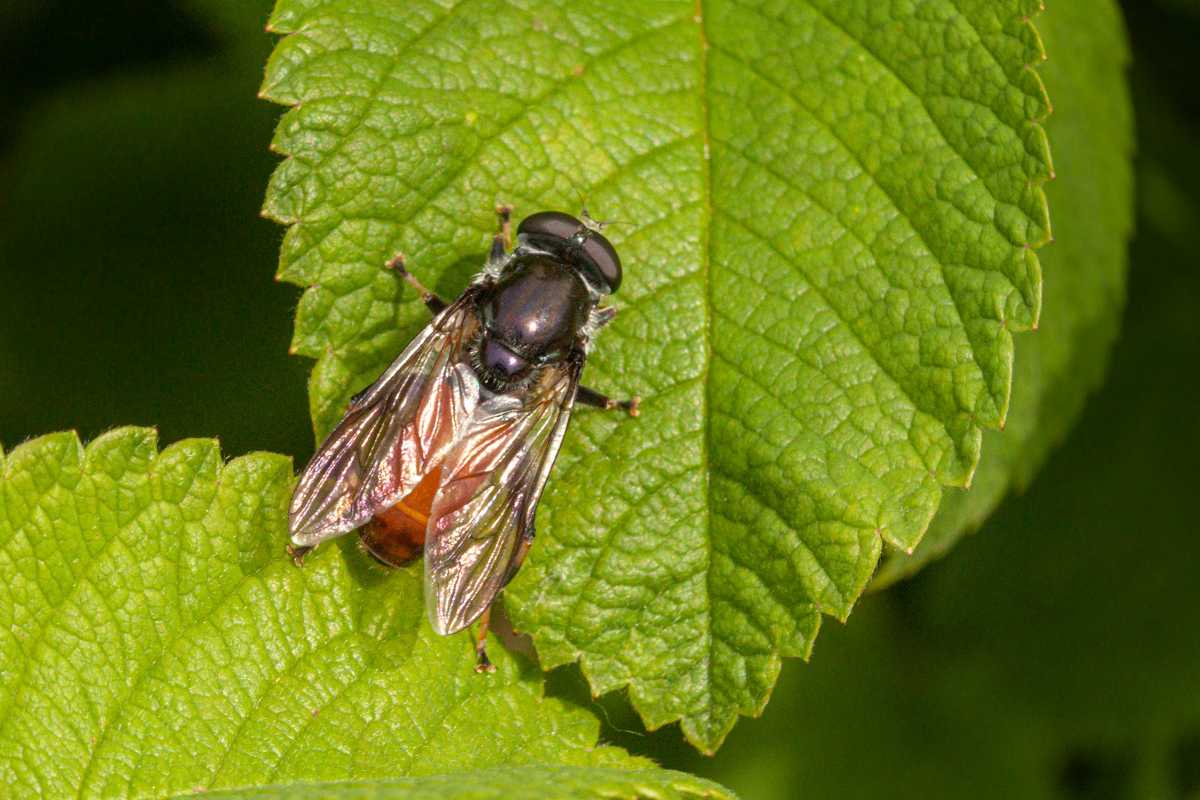
There are thousands of species of hover flies in the world. Only some of them are predators, as others are mainly decomposers at the larval stage and pollinators as adults.
The ones that prey on other insects are fiercer as larvae, which will help you exterminate aphids and thrips.
Hover flies are black and yellow like wasps, but they can be distinguished thanks to their flat abdomens and shorter antennas. A plus is that they are incapable of stinging, unlike wasps.
Some of the plants that hover flies favor are yarrow, alyssum, dill, cosmos, mallow, poached egg plant, lemon balm, potentilla, and marigold.
Beneficial Predatory Insects Final thoughts
Beneficial predatory insects are a wonderful addition to any garden. They help keep common garden pests under control, which means less damage to your plants.
In fact, insects actually help to improve plant growth because they feed on pest eggs and larvae.
That said, it’s important to note that these insects aren’t just useful for controlling pest populations. Some are even great pollinators and help in decomposition.
When considering how to introduce beneficial predatory insects into your garden, it’s important to familiarize yourself with the different types of predators and understand their habitats and diets.
For example, spiders prefer cool and shaded areas while ground beetles appreciate piles of waste material.
You should also take into account the plants that attract these good bugs. Planting these in your garden will make it all the more inviting for hungry predators.
Make your garden a safe haven for these beneficial predatory insects and keep the balance in the ecosystem in check by avoiding hazardous insecticides.
Want to explore the world of insects further? Get your hands on these good reads:
- Beneficial Garden Insects
- What Bugs Are Good in Compost
- Beneficial Bug Habitats
- Helpful Insects for Houseplants
Sources:

